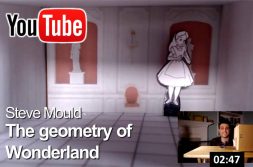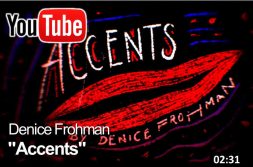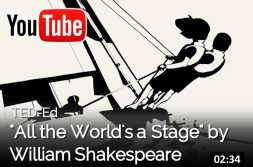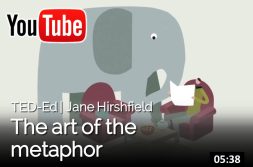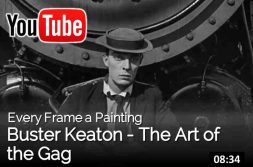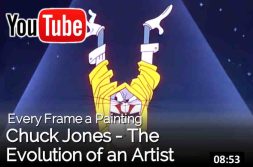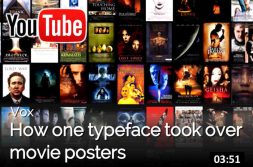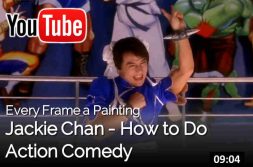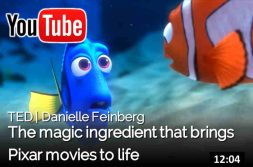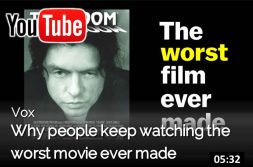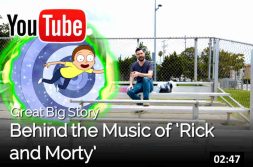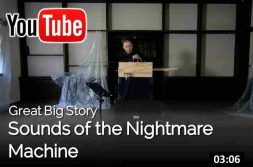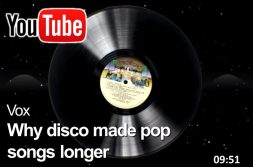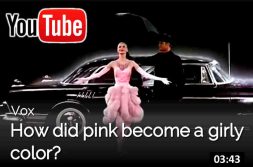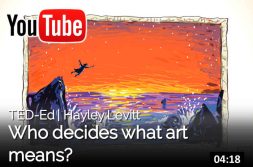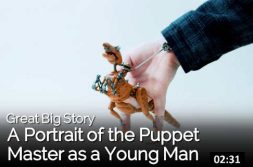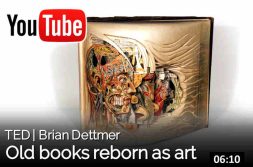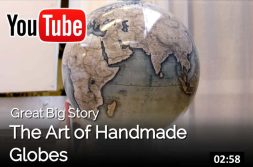Art
Architecture
[more]
[less]
If you ever find yourself stranded in the snowy Arctic (or bored in Minecraft), you’re gonna need to know how
[more]
[less]
[more]
[less]
[more]
[less]
Open offices have been around a surprisingly long time. But they’re relatively misunderstood for their
[more]
This episode of Overrated explores the history, including Frank Lloyd Wright, Herman Miller, and other key figures in the office design movement. Our workplaces haven’t always been this way — this is how we got here.
[less]
How an Ames Room works. This is a perspective illusion that makes people appear to grow and shrink.
[more]
In 1956, architect Frank Lloyd Wright proposed a mile-high skyscraper, a building five times as high as the Eiffel Tower. While this massive tower was never built, today bigger and bigger buildings are going up around the world. How did these impossible ideas turn into architectural opportunities? Stefan Al explains how these megastructures became fixtures of our city skylines.
Lesson by Stefan Al, directed by TED-Ed.
[less]
Fashion
When you think of a soccer ball, you probably imagine a classic black-and-white paneled ball. It’s known
[more]
The 1966 World Cup in England was broadcast live across the globe and it was at this point that television became a huge part of the sport. Thanks to the BBC, it was seen by four hundred million people. But spotting the ball was a bit challenging.
Back then, soccer balls looked more like reddish-brown volleyballs. And on black-and-white TVs, it didn’t really stand out from the green field.
By the 1970 World Cup, the soccer ball had changed to that classic Telstar. The contrasting panels made it stand out on TV. Plus, the players loved it because the 32 panels brought the ball closer to an actual sphere.
This year’s World Cup ball is called the Telstar 18, a nod to the original design. While the panels have changed to just six propeller-shaped pieces to make the ball even more spherical, the black-and-white checkered design is back.
[less]
[more]
[less]
[more]
[less]
It turns out that women went from having what some might call “superior” pockets to the ridiculously tiny
[more]
[less]
[more]
[less]
Language
An animated interpretation of Denice Frohman’s poem “Accents”.
Poem by William Shakespeare, directed by Jeffig Le Bars and Jérémie Balais.
[more]
Lesson by Jane Hirshfield, animation by Ben Pearce
[less]
Movies
[more]
[less]
[more]
[less]
[more]
[less]
For the past 25 years, one typeface has dominated Hollywood typography: Trajan. It’s everywhere, from
[more]
[less]
Some filmmakers can do action. Others can do comedy. But for 40 years, the master of combining them has been Jackie Chan. Let’s see how he does it. (Note: to see the names of the films, press the CC button!)
James regales us with his tales of donating blood.
[more]
[less]
[more]
Tommy Wiseau’s film The Room (2003) is by many accounts the worst movie ever made. The plot barely makes sense, the set design is comically inept, and most of the dialogue sounds like it was fed through Google Translate multiple times. Yet, for 14 years, people have been congregating at midnight screenings all across the globe to watch what some people call “the Citizen Kane of bad movies.”
Despite the film’s incoherency, audiences ritualistically throw plastic spoons, shout call and response lines at the screen, and toss around footballs in the aisles at monthly screenings. Knowing all the inside jokes and participatory cues gives viewers what sociologist Pierre Bourdieu termed “cultural capital.” People who know when to shout specific lines or when to hurl spoons are deemed Room veterans.
Contrary to what you may think, researchers have found that an appreciation of this kind of “trash cinema” can actually indicate higher levels of intelligence. Trash films share more characteristics with avant-garde art films than they do with typical commercial Hollywood fare. Audiences are drawn to both “trash” and “art” films for many of the same reasons, like their transgressive nature and their rejection of mainstream aesthetic norms.
Watch the video to know more about The Room and be sure to pick up Bissell’s book (that he co-wrote with Greg Sestero) to read many more legendary stories about the production of the “best worst movie.”
[less]
Music
[more]
[less]
[more]
[less]
[more]
Lesson by Anita Collins, animation by Sharon Colman Graham.
[less]
Who can you relate to Veronica or Vanessa? Here is a cheesy song called It’s Valentine’s Day!
Guitarist and singer Raul Midon plays “Everybody” and “Peace on Earth” during his 2007 set at TED.
[more]
[less]
[more]
[less]
If you’ve ever seen an orchestra perform you’ve probably had a difficult time looking away from the person
[more]
We decided to ask James Gaffigan – a conductor who recently guest conducted the New York Philharmonic in Central Park – just what it is that makes a conductor so necessary and how their actions shape the performance.
[less]
In the early 1970s, a musical sensation took over New York City. It was called Disco. Before Disco
[more]
By 1973, their influence as musical taste makers became apparent, and a handful of unconventional dance tracks became pop crossover hits. With barely any radio airplay, songs like “Love Theme” and “Girl You Need a Change of Mind” became defining tracks of the disco era.
These songs were repetitive, hypnotic, and funky, and they were also pretty long compared to other pop hits. That presented a problem for DJs using 7-inch 45rpm singles, which fit only 3:30 minutes of quality audio on them, during their night-long sets. They needed a vinyl record that could make their most popular tracks sound powerful on a dance floor and last the whole night.
In 1976, an accidental studio discovery by Disco pioneer Tom Moulton provided the solution: A 12-inch single. By stretching one song across 12 inches of vinyl, a format typically reserved for full-length albums, those extended dance tracks had room to breath.
By the 1980s, the 12-inch single dominated pop music. It not only changed the sound of records, it allowed for music producers to experiment with length and structure.
[less]
Painting & Colors
[more]
[less]
[more]
[less]
Today we’re talking about the blackest material ever created!
[more]
Lesson by Hayley Levitt, directed by Avi Ofer.
[less]
Why are the babies in medieval art so ugly? Phil Edwards dug a little to find out.
[more]
This Great Big Story was inspired by Genesis.
[less]
Other
[more]
[less]
[more]
[less]
[more]
[less]
[more]
[less]
What do you do with an outdated encyclopedia in the information age? With X-Acto knives and an eye for a good remix, artist Brian Dettmer makes beautiful, unexpected sculptures that breathe new life into old books.
[more]
[less]
[more]
[less]
[more]
[less]





